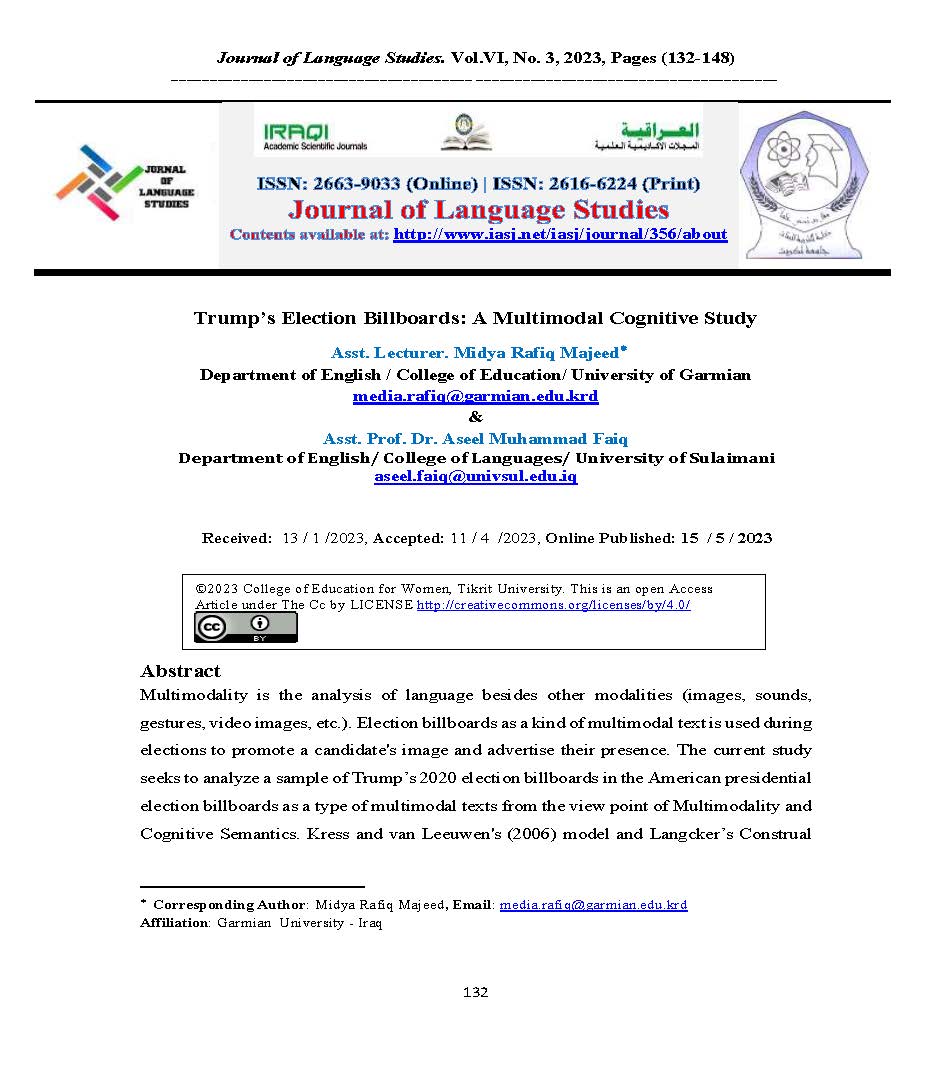Trump’s Election Billboards: A Multimodal Cognitive Study
DOI:
https://doi.org/10.25130/jls.6.3.2.10Keywords:
Cognitive Semantics, Langacker‟s Construal Theory, Multimodality, Election Billboards, TrumpAbstract
Multimodality is the analysis of language besides other modalities (images, sounds, gestures, video images, etc.). Election billboards as a kind of multimodal text is used during elections to promote a candidate's image and advertise their presence. The current study seeks to analyze a sample of Trump’s 2020 election billboards in the American presidential election billboards as a type of multimodal texts from the view point of Multimodality and Cognitive Semantics. Kress and van Leeuwen's (2006) model and Langcker’s Construal Theory (2013) are used to demystify how the visual and linguistic elements cooperate to serve the purpose of the billboard as a whole. The visual elements are analyzed based on Kress and van Leeuwen (2006) Grammar of Visual Design model. On the other hand, Langacker's construal operation model is used for the analysis of both linguistic and visual elements as a cognitive semantic theory. The analysis's findings indicate that the models are essential to constructing and deciphering the meaning of political election campaign billboards, and they also prove that in constructing meaning, the visual and textual elements of Trump’s election billboards complement one another even though the focus on the linguistic elements is observed to be higher to some extent rather than that of the visual elements

